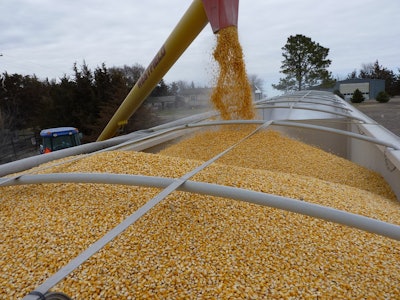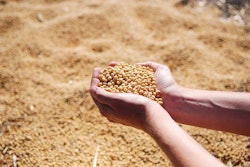
World Corn FOB Values Plummeting
World corn values were hit hard last week as Ukraine and South American markets turned sharply lower while U.S. values mostly avoided the steep sell-off.
FOB values at Ukraine and Argentina eroded this past week relative to U.S. values. Current FOB values of foreign sellers have fallen by 25 cents/bushel relative to the U.S., making it a challenge for the U.S. to have an aggressive export program at U.S. prices.
What Does This Mean for U.S. Farmers? As March approaches expect more private estimates of corn and bean acres to be the focus point inside the markets. The declines in soy and the moderate increase in corn could be friendly the back end of the curve if the Chinese make any concessions on exports. Spring wheat adding 1 MA is not friendly despite the reduction in HRW acres as there should be ample supplies of U.S. protein wheat.
Saying Goodbye to El Nino
Temperatures are falling enough to suggest El Nino conditions are fading, and while it is not officially ended, it likely will fade in the coming months. The most likely trajectory for the ENSO cycle is a “neutral” phase during the U.S. spring and summer months. That bodes well for big U.S. crops with some potential problems in Europe.
The North America summer outlook in its early stages favors a very cool/wet pattern. If it verifies, it would point to significant upside for all crops along the Canadian Prairies, U.S. Corn Belt, Plains, and Mississippi Delta regions. Such widespread favorable weather would bring back questions about record yield potential for both corn/soybeans, an issue to watch moving forward especially considering that the March-May outlook supports a beneficial rapid planting season in the Corn Belt.
Europe could experience warmth/dryness to a large degree during June-August if the outlook verifies. This could benefit the winter wheat harvest, but points toward significant downside risks for spring wheat, corn, and soybeans.
How Does This Impact the U.S. Farmer? Another year of ideal weather certainly does not spell great marketing opportunities in an already oversupplied grain complex.
Brazil at 36% Harvested for Soy Crop
Brazil's soybean harvest has advanced to 36% of the planted area, 19 percentage points above this time last season as some farmers sowed the soy earlier and then speeded up harvesting due to dry and hot weather.
Consultancy AgRural said on Monday that in spite of being ahead of last year and above a 19 percent five-year average, harvesting slowed slightly over the past few days due to the return of the rains. Humidity, however, did not compromise the quality of the soy being harvested, AgRural said.
What Does This Mean for U.S. Farmers? An early soy harvest has two implications here. First, it gives world buyers a fresh market to buy beans at and puts more competition on U.S. soy traders. Second, it sets the stage for an early planting of the second season Safrinha corn crop. The earlier that crop is planted the better chance that Brazil farmers have of missing cold and dry weather late in the growing season that cut into yields.
The risk of trading futures, hedging, and speculating can be substantial. FBN BR LLC (NFA ID: 0508695)










